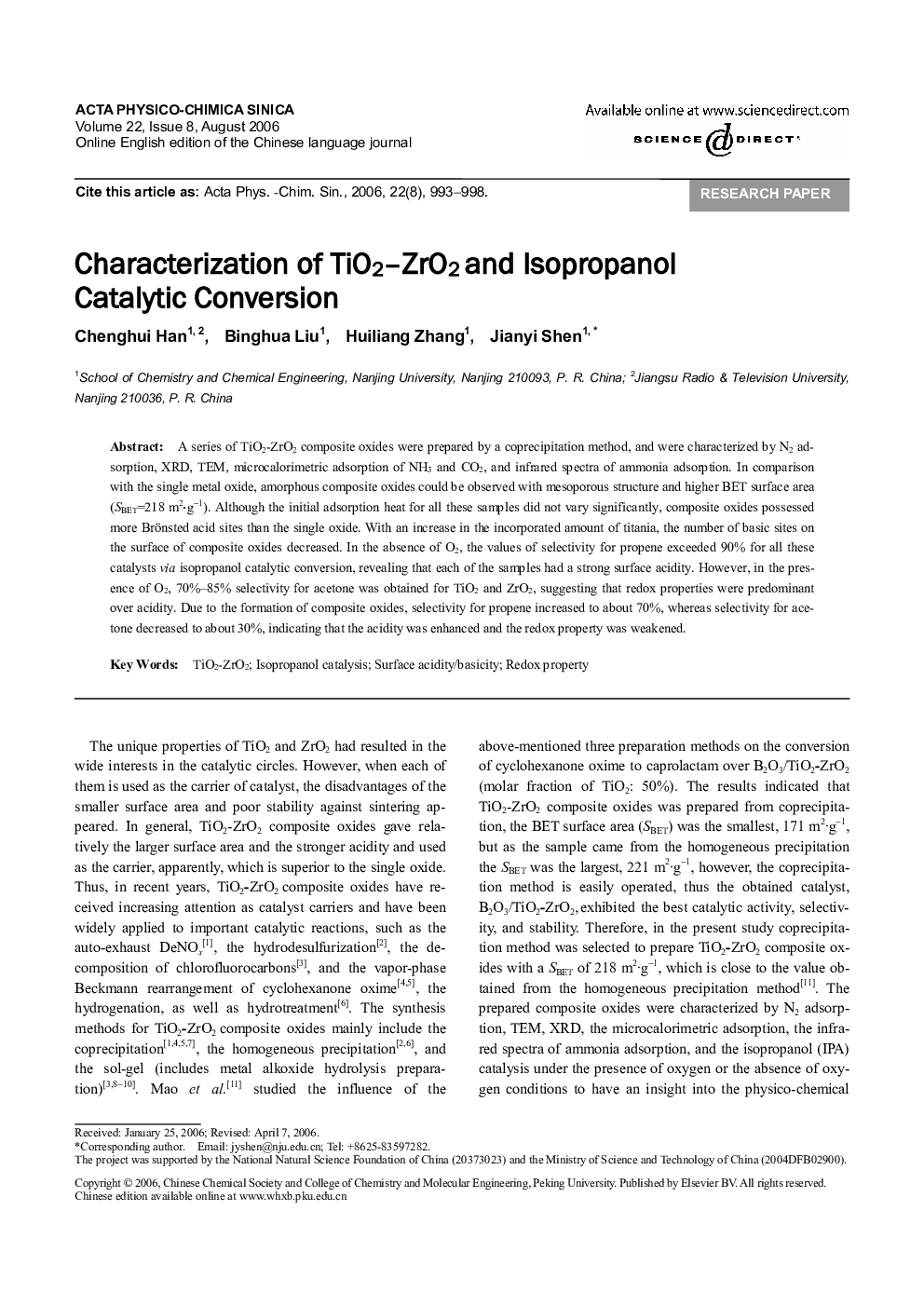| Article ID | Journal | Published Year | Pages | File Type |
|---|---|---|---|---|
| 7832552 | Acta Physico-Chimica Sinica | 2006 | 6 Pages |
Abstract
A series of TiO2-ZrO2 composite oxides were prepared by a coprecipitation method, and were characterized by N2 adsorption, XRD, TEM, microcalorimetric adsorption of NH3 and CO2, and infrared spectra of ammonia adsorption. In comparison with the single metal oxide, amorphous composite oxides could be observed with mesoporous structure and higher BET surface area (SBET=218 m2·gâ1). Although the initial adsorption heat for all these samples did not vary significantly, composite oxides possessed more Brönsted acid sites than the single oxide. With an increase in the incorporated amount of titania, the number of basic sites on the surface of composite oxides decreased. In the absence of O2, the values of selectivity for propene exceeded 90% for all these catalysts via isopropanol catalytic conversion, revealing that each of the samples had a strong surface acidity. However, in the presence of O2, 70%-85% selectivity for acetone was obtained for TiO2 and ZrO2, suggesting that redox properties were predominant over acidity. Due to the formation of composite oxides, selectivity for propene increased to about 70%, whereas selectivity for acetone decreased to about 30%, indicating that the acidity was enhanced and the redox property was weakened.
Keywords
Related Topics
Physical Sciences and Engineering
Chemistry
Physical and Theoretical Chemistry
Authors
Chenghui Han, Binghua Liu, Huiliang Zhang, Jianyi Shen,
